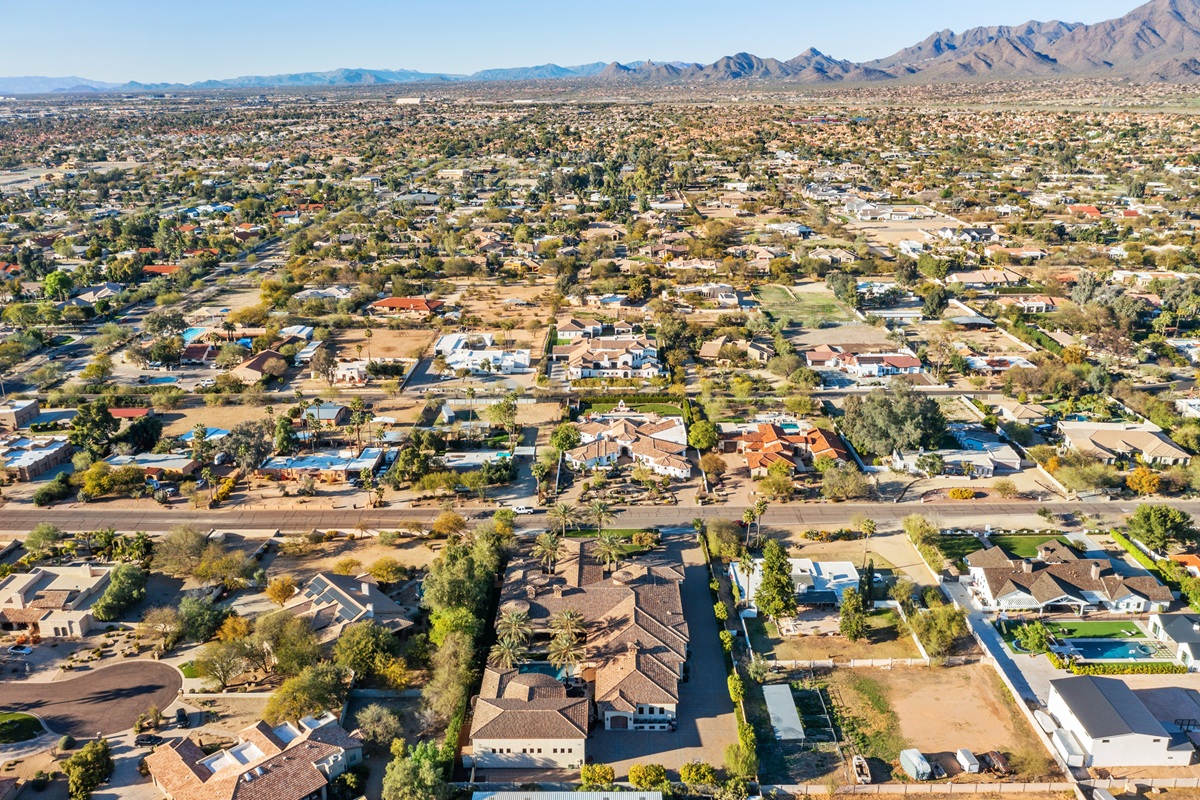Latest Look At The Overall Greater Phoenix Real Estate Market
Market Update
The Greater Phoenix real estate market has shifted gears. Recent data highlights a cooling trend, with indicators confirming a transition into a buyer’s market. While the headlines might sound daunting, it’s not all doom and gloom for the largest metro pertaining to the Arizona real estate market. Whether you’re buying, selling, or simply observing, understanding these shifts helps you make informed decisions. Let’s break down what’s happening and what it means for you.
What the Latest Numbers Reveal
Market indicators like the Contract Ratio and Cromford Market Index (CMI) show the Phoenix area has entered cooler territory. These tools measure demand versus supply and track how quickly homes move off the market.
- Contract Ratio at 30: Marks the boundary of a “cold market.”
- Supply Rising: Active listings climbing while demand softens.
- CMI at 86.7: Reflects buyer advantages in many ZIP codes.
- Seasonal Impact: December typically slows down sales activity.
While these shifts may bring challenges for sellers, they’re creating opportunities for buyers ready to negotiate or explore creative financing options.
Also Read: What’s Next For The Overall Greater Phoenix Real Estate Market

Buyer’s Market: What It Means
Contrary to popular belief, a buyer’s market isn’t just about lower prices. It’s about buyers having more control due to higher inventory and reduced competition.
- More Choices: Higher inventory offers varied options.
- Negotiation Power: Fewer buyers mean sellers are more flexible.
- Creative Financing: Opportunities like assumable mortgages or seller financing.
- Historical Context: Buyer’s markets in Phoenix are rare, occurring only three times in the last 24 years.
For buyers, this shift means it’s a strategic time to act, even if prices haven’t dropped significantly. Sellers, however, may need to adjust expectations or pricing strategies.
Also Read: Paradise Valley Buyers Have More Leverage As Inventory Rises
ZIP Code Insights: Where It’s Hot & Cold
Market dynamics vary widely across Greater Phoenix, with conditions ranging from seller-friendly to balanced to buyer-favored areas.
- Buyer Markets: Queen Creek, Maricopa, Buckeye, and Surprise.
- Balanced Zones: Peoria and Glendale hold steady.
- Seller Markets: Fountain Hills, Chandler, Scottsdale, and Phoenix.
- Cold Pockets: A majority of ZIP codes are trending toward cooler conditions.
The data emphasizes the importance of hyper-local insights. Real estate decisions depend heavily on ZIP code-specific trends.
What’s Next for Buyers & Sellers?
The market’s current indicators offer different paths for buyers and sellers. Of course, that depends on their goals.
For Buyers:
- Explore homes with creative financing options.
- Leverage reduced competition to negotiate better deals.
- Research ZIP-specific trends to target favorable areas.
For Sellers:
- Adjust pricing strategies to attract buyers.
- Be open to negotiation or creative terms like seller financing.
- Keep an eye on ZIP code-specific demand to understand competition.
While the market has cooled, transactions are still happening. Understanding your position helps you move forward confidently.
Also Read: How California Migration Is Reshaping Arizona’s Housing Market

Seasonal & Economic Factors at Play
The holiday season and broader economic conditions are shaping market behavior.
- December Slowdown: Buyers are distracted by holidays; sellers see inventory stack up.
- Mortgage Rates: Hovering around 6.88%, lower than recent peaks.
- Fed Actions: A potential rate cut on December 18 could impact buyer confidence.
- Economic Indicators: Upcoming job reports may shift mortgage rate trends.
It’s a complex mix of timing, financial factors, and market sentiment, making professional guidance essential.
Final Thoughts
Yes, the Phoenix real estate market is cooler, but that’s not inherently bad news. For buyers, it means more opportunity and leverage. For sellers, it signals the need for strategy and flexibility. Whatever your goals, the key is staying informed and ready to adapt to changing conditions.
Also Read: Greater Phoenix Real Estate Update Heading Into The Holidays


















